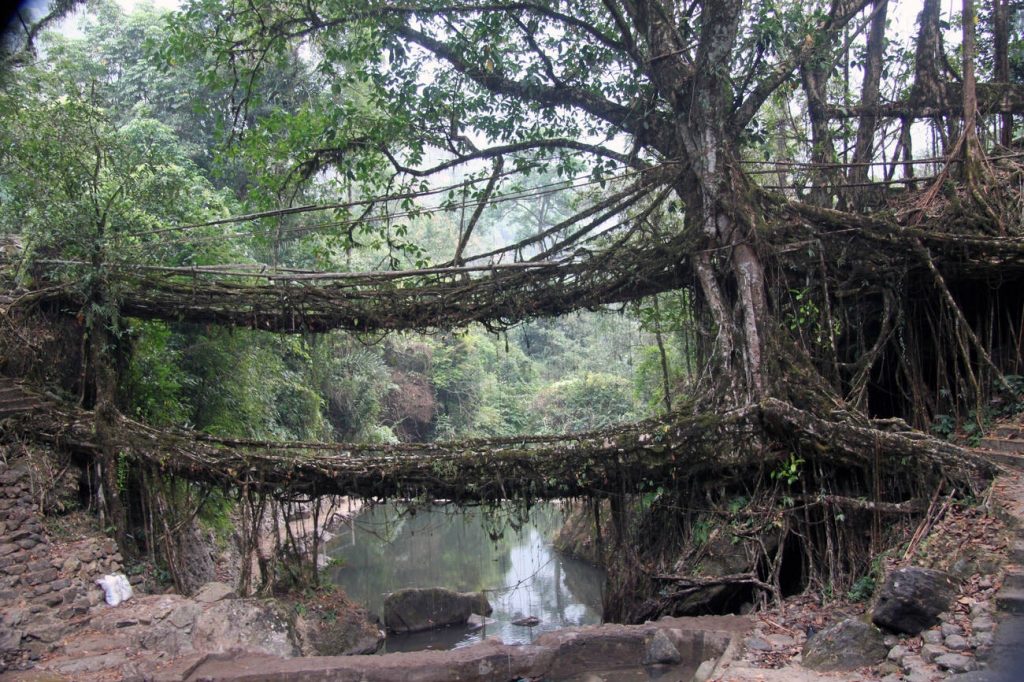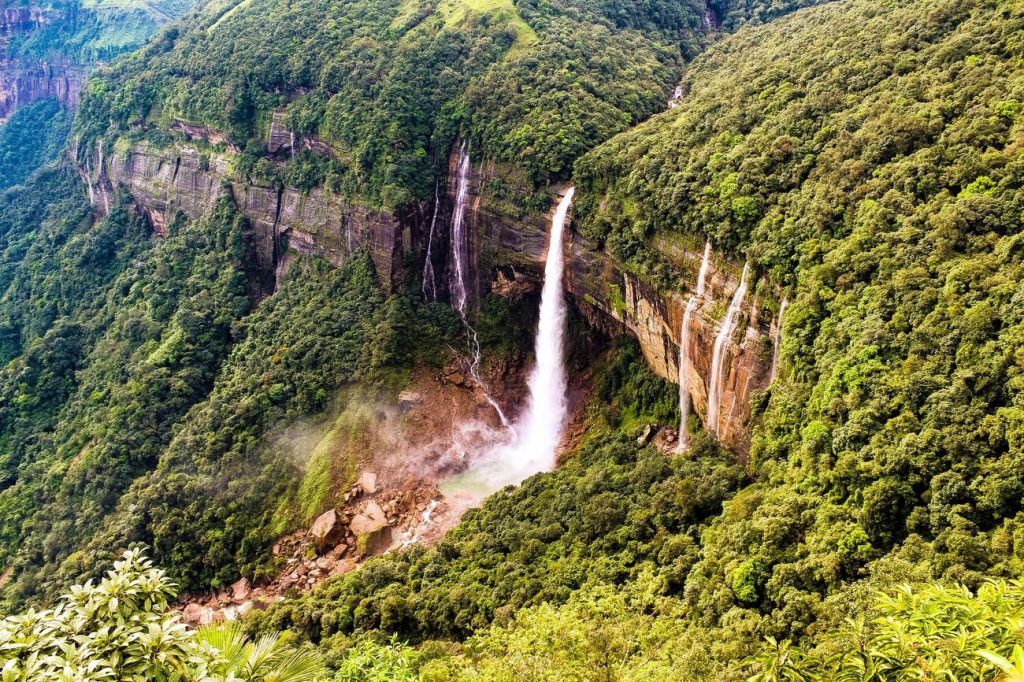Why you should visit and know the itinerary of meghalaya tour packages?
Meghalaya Tour Packages is famed for its roaring high waterfalls and dense forests. Its name literally means “Abode of the Clouds.” As soon as you arrive in Meghalaya, you will quickly realize that describing the entire mood of the state is challenging as it is a land of wonders in terms of travel or tourism. Meghalaya, often known as the “Land of the Clouds,” is a serene and exciting place. You will discover that the magical vistas that Meghalaya has to offer are nothing but maximum charm and peace as you explore this breathtaking splendor.
The intriguing tunnels and crystal-clear river water make this a must-see destination. The sight of Meghalaya’s lofty mountains will leave you speechless. On January 21, 1972, Meghalaya was founded by splitting out two districts from Assam: the United Khasi Hills and Jaintia Hills, and the Garo Hills. Meghalaya was once a part of Assam, but on January 21, 1972, the districts of Khasi, Garo, and Jaintia hills were separated from Assam and formed the new state of Meghalaya.
Double Decker Living Root Bridge (Meghalaya Tour Packages)
One of its most admired wonders of Meghalaya Tour Packages is the Sohra Double Decker Living Root Bridge. The famed Double Decker Living Root Bridge, nestled in the deep green forests of Meghalaya, is blessed with rain for the most of the year. It is one of Meghalaya’s most beautiful partially man-made structures, erected in part by the Khasi tribe. The term “double-decker bridge” refers to a structure with two decks or tiers generated by root entanglement. If you are not physically healthy enough to climb to the summit, the upper bridge is 20 metres long and tough to access.
The bridge begins in the village of Tyrna and travels along the Umshiang River. The hike down to the bridge from the base village of Tyrna, which is 20 kilometres away from Sohra City, is a massive 3500 steps each way to the bridge and back. On the approach to the actual bridge, there are other smaller bridges that are not entirely supported by nature and are supported by metal wire because the tree roots utilized for these bridges are not as strong as those used for other trees.

Nohkalikai waterfall
The most dramatic and highest plunge waterfall in India is Nohkalikai Falls, which is located around 7.5 kilometres from Cherrapunji (Sohra) in the East Khasi Hills District of Meghalaya. Nohkalikai Falls should and must be included in your Meghalaya itinerary. Nohkalikai literally means “Jump of Ka Likai,” where “Noh” means “jump,” “Ka” is a feminine prefix, and “Likai” is the name of the Khasi woman who inspired the terrifying legend. Nohkalikai is one of the world’s highest waterfalls, with a plunge of around 340 metres. The sight of falls plunging into a stunning blue lake from red-rock cliffs surrounded by lush greenery makes visitors’ jaws drop. With time and season, the pool at the base of the falls changes colour from blue to green to aqua.

Dawki
Dawki is a beautiful border town in Meghalaya, known for its crystal-clear Umngot River that looks almost transparent. Located near the India-Bangladesh border, Dawki attracts travelers with its scenic beauty, boat rides, and peaceful surroundings. The town is surrounded by green hills and is a gateway to several natural wonders in the region. The hanging Dawki Bridge, built during British rule, adds to its charm. Whether it’s for adventure or relaxation, Dawki offers a magical experience. Its unique landscape and clean waters make it one of the most famous and photographed places in Northeast India.

Amazing 5N/6D trip to
Meghalaya tour packages
On day one, you will be picked from Guwahati to Shillong. Mid way enjoy the Umium Lake views, water activities, explore police bazar, also the Ward’s lake and can visit the church too.
Day 2, after breakfast head towards Cherrapunjee. Cherrapunjee sightseeing is included in the Meghalaya tour packages- caves, waterfalls, viewpoints etc.
Day 3, get on the adventure to trek the Double Decker Living Root Bridge.
Day 4 is filled with scenic views of Dawki- Asia’s cleanest river, Mawlynong- Asia’s cleanest village. Get into water activities in Dawki and in the village, you can also explore single decker living root bridge.
Next day on your trip, explore Krangshuri Waterfall- where you can also swim. After lunch explore Phe Phe Waterfall which is hidden but very worth visiting. On Day 5, return back to Shillong.
Day 6, is the last day. If time permits, explore the iconic Laitlum spot. Return back to Guwahati with pocket full of photos and memories.

When is the best time to visit Meghalaya?
With its verdant valleys, clean waterfalls, and otherworldly views in the monsoon, Meghalaya is bliss on earth. The choice of when to visit this state is yours, whether it’s for the pleasant summer days or the stunning cherry blossom trees in full bloom in the autumn.
The greatest time to visit Meghalaya, often known as the Land of Clouds, is between October and June. Most tourist spots in the state have temperatures that rarely exceed 30°C, making it an ideal getaway from the country’s summer season, which runs from March to June. It is also popular with tourists from high and moderate temperature zones throughout the autumn and winter seasons, i.e. from October to November and December to February. Meghalaya, the wettest state in the country, is not typically advised to travelers during the rainy season. The state receives an average of 250 cm of rain each year. The season starts in May and lasts through the end of September, or occasionally until the middle of October. However, one may visit the lovely state at the start or end of the monsoon season, when the rains aren’t too intense and the scenery is breathtaking.
Meghalaya in summer (April to June)
The sun kisses this rainy state, making this the ideal time of year for adventurers. The pleasant weather allows you to fulfill your curiosity while exploring the region outside. As a result, the best time to visit Meghalaya is during the summer. Because it is raining in the area, the skies are always dark and dreary throughout the day, making it an ideal time for adventurous activities. At this time of year, there will never be a dull moment in Meghalaya. Most festivals are held in the summer, when the streets are bustling with people and activity. The good weather also makes it an ideal time to go sightseeing and participate in adventure activities.
Meghalaya in Monsoon (July to September)
At this time of year, the state is drenched with rain showers. Cherrapunjee and Mawsynram, two of the world’s rainiest cities, are located in Meghalaya. This makes the monsoons a great opportunity to stay put in the hills with your family and enjoy a hot beverage while snuggled into a blanket. At this time of year, going out and exploring the area is not advised. The landscape compensates for this with misty mornings, dewy and verdant meadows, and cascading waterfalls that pound down furiously on the rocks.
Meghalaya in Autumn (October to November)
The constant rains make the autumn weather in Meghalaya chilly, wet, and humid. At this time of year, the damp state is speckled with cherry blossom trees that are in full bloom. With the arrival of the winter season, the temperatures begin to drop. This is the ideal moment to take in the splendour of the state at its peak. Autumn also heralds the arrival of mesmerising cherry blossoms. This season, it will be adorned with pink and white blossoms, making you feel as if you are in a Japanese garden.
Meghalaya in winter (December to February)
The weather in Meghalaya during the winter is pleasant. Temperatures continue to drop as the days pass. The days, however, are rather warm due to the sun, while the evenings bring with them some cool winds. In comparison to January and February, December is not as cold. The state will be still filled with cherry blossom in most of the parts. The weather, on the other hand, remains clear. This weather also makes it possible to go on hiking adventures and visit nearby places like Shillong, Tura, and Guwahati. Dawki and the Living Route Bridge are also worth visiting.







